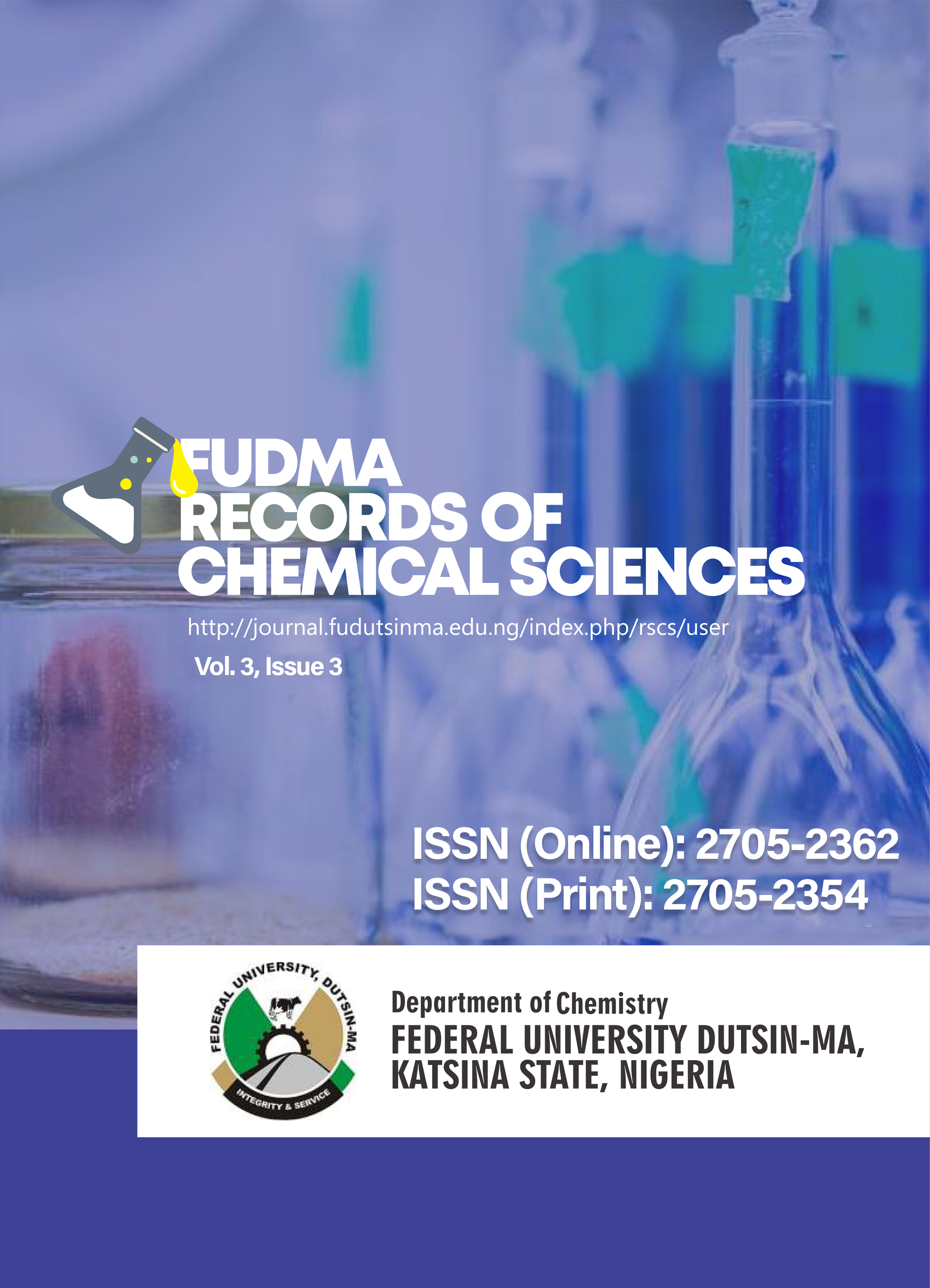Assessment of Ecological and Environmental Pollution of Kanye Dam, Rimin Gado Local Government Area, Kano State
DOI:
https://doi.org/10.33003/Keywords:
Ecology, Pollution, Heavy Metals, Zooplankton, PhytoplanktonsAbstract
This study examined the distribution, composition, and relative abundance of phytoplankton and
zooplankton in Kanye Dam from March to August, 2024 using standard methods for water
physicochemical and heavy metals as well as Planktons diversity with a focus on pollution impacts. The
investigation identified three main classes of phytoplankton: Bacillariophyceae (42.55%),
Cyanophyceae (34%), and Chlorophyceae (16.17%). Significant variations (P>0.01) were observed in
phytoplankton distribution across different months and sampling stations, with higher numbers recorded
during the early rainy season and lower numbers during the dry season. Among the Cyanophyceae,
three species—Phacus sp., Oscillatoria sp., and Euglena sp. present, with Euglena sp. being the most
prevalent throughout the year. The Bacillariophyceae included seven species, with Tabellaria sp.
showing the highest occurrence across all stations. In the Chlorophyceae, Microcystis sp. and Ulothrix
sp. were most frequently observed. For zooplankton, Protozoa, including Tracheolomonas sp., Plectus
sp., Paramecium sp., Euglena sp., Amoeba sp., Haplotaxis sp., Vorticella sp., and Anisonema sp., were
also present, with Amoeba sp. being the most abundant. Annelida were represented by a single species
known as Diplogasteroides, with a total of 15 representatives. The distribution and composition of both
phytoplankton and zooplankton in Kanye Dam were influenced by ecological and environmental
changes that were found to be within the permissible limit for aquatic life, with higher plankton
numbers observed during the months of the rainy season compared to those of the dry season. The water
body experiences less pollution the other water bodies within the area which makes it safe for these
organisms to thrive well.






